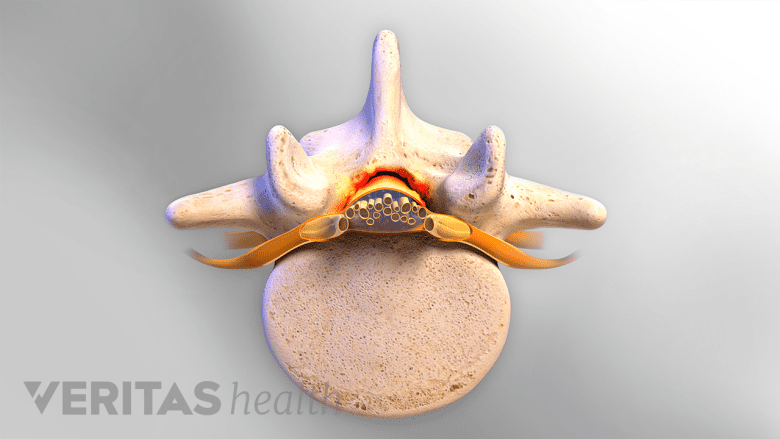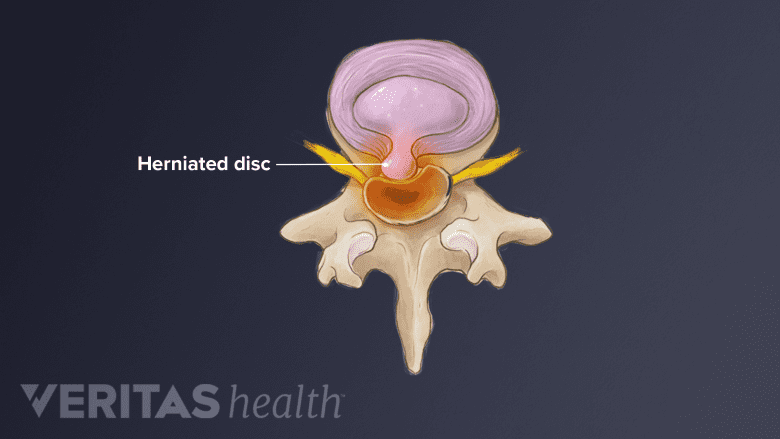Mild to debilitating buttock pain with or without hip pain and leg pain is one of the most common symptoms of piriformis syndrome, affecting around 17% of patients with chronic back pain.1Fahmi A, Rahmadhan MA, Aprianto DR, Subianto H, Turchan A. Complete resolution of recurrent piriformis syndrome after piriformis resection with 3 years’ follow: A case report. International Journal of Surgery Case Reports. 2020.77:576-579. http://doi.org/10.1016/j.ijscr.2020.11.099 Rarely, it is possible that these symptoms may indicate a serious condition that requires immediate medical or surgical intervention.
Understanding and differentiating between (benign) piriformis syndrome symptoms and a medical emergency can help prevent disability and life-threatening consequences by seeking prompt medical attention.
In This Article:
- Piriformis Syndrome: When the Symptoms Indicate a Medical Emergency
- Piriformis Syndrome Surgery
- Piriformis Syndrome Video
Buttock Muscle Pain: When It Is a Medical Emergency
In rare cases, buttock pain may be a symptom of serious medical conditions requiring immediate attention. These conditions include but are not limited to:
Cauda equina syndrome
Cauda equina syndrome is a serious condition that compresses, irritates, or damages the bundle of nerve roots at the lower end of the spinal cord, known as the cauda equina (Latin for ‘horse’s tail’— which is what these nerves resemble as they exit the spine). These nerves control movement and sensation in the lower extremities, including the legs, feet, bladder, bowel, and sexual function.2Lodin J, Brusakova S, Kachlik D, Sames M, Humhej I. Acute piriformis syndrome mimicking cauda equina syndrome: illustrative case. J Neurosurg Case Lessons. 2021.2(17):CASE21252. http://doi.org/10.3171/CASE21252
Central canal stenosis
Lumbar spinal canal narrowing in the lower back can compress the spinal nerves, leading to pain, and numbness in the lower limbs.
A condition caused by the narrowing of the spinal canal in the lower back known as central canal stenosis, can compress the spinal cord and/or important nerves in the lower back and cause pain, numbness, and weakness in the lower extremities.3Siddiq AB, Khasru MR, Rasker JJ. Piriformis Syndrome in Fibromyalgia: Clinical Diagnosis and Successful Treatment. Case Reports in Rheumatology. 2014.893836. http://doi.org/10.1155/2014/893836
Piriformis pyomyositis
Piriformis pyomyositis is a bacterial infection of the piriformis muscle, a serious condition that causes severe pain deep in the buttock accompanied by swelling and/or weakness, as well as fever.4Siddiq AB, Rasker JJ. Piriformis pyomyositis, a cause of piriformis syndrome-a systematic search and review. Clin Rhematol. 2019.38(7):1811-1821.
Septic sacroiliac osteomyelitis
A rare form of osteomyelitis, known as septic sacroiliac osteomyelitis, specifically affects the sacroiliac (SI) joints, which connect the lower part of the spine (sacrum) to the pelvic bones. SI joint infection may cause pain, swelling, and weakness in the pelvis and hip region and be accompanied by a fever.5Leong M, Huang P. Piriformis syndrome as the only initial manifestation of septic sacroiliac osteomyelitis. Clin Med (Lond). 2020.20(3):e18-19. https://www.ncbi.nlm.nih.gov/pmc/articles/PMC7354056/
Entrapment of lumbar and sacral nerves
Entrapment of the spinal nerves and/or the cauda equina may mimic the symptoms and signs of piriformis syndrome.
Several nerves emerge from the lower spine and the spinal cord and enter the pelvis as a group. These nerves may get entrapped in the piriformis muscle due to anatomic variants of the muscle and/or the nerves. Pelvic nerve entrapment symptoms may vary depending on the areas supplied by affected nerve roots and may range from sciatica and lower urinary tract symptoms to pelvic pain and sexual dysfunction.6Sermer C, Li ALK, Fernandes GL, et al. Intrapelvic entrapment of sacral nerve roots by abnormal bundles of the piriformis muscle: description of an extra-spinal cause of sciatica and pudendal neuralgia. J Hip Preserv Surg. 2021.8(1):132-138. doi.org/10.1093/jhps/hnab041 Other causes of pelvic nerve entrapment include tumors and masses in the pelvis.7Wadhwa V, Thakkar RS, Maragakis N, et al. Sciatic nerve tumor and tumor-like lesions—uncommon pathologies. Skeletal Radiology. 2012.41:763-774. http://doi.org/http://doi.org/10.1007/s00256-012-1384-7
Severely herniated disc
A severely herniated lumbar disc that causes pain and numbness in the lower limbs may require immediate medical attention.
A severely herniated lumbar disc can compress the spinal cord and/or important nerves in the lower back and cause pain, numbness, and weakness in the lower extremities.8Mousa FM, Bakr ZA. The Piriformis Syndrome: Evaluation of Seven Cases. Cihan University-Erbil Scientific Journal. 2019.3(1):71-74. http://doi.org/10.24086/cuesj.v3n1y2019.pp71-74
Spinal tumors
Benign or malignant tumors in the spine can compress the spinal cord and/or important nerves in the lower back and cause pain, numbness, and weakness in the pelvis, thigh, and leg.9Kayani B, Sewell MB, Tan KA, Hanna SA, Williams R, Pollock R, Skinner J, Briggs TWR. Prognostic Factors in the Operative Management of Sacral Choromas. World Neurosurgery. 2015.84(5):1354-1361. http://doi.org/10.1016/j.wneu.2015.06.030 Sacral chondromas are the most commonly occurring tumor in the pelvic area and cause leg weakness and gait abnormality symptoms.10Reardon T, Marsh C, Rippe P, et al. Clinical management of pediatric chordomas: a comprehensive review. Acta Neurologica Belgica. 2021.121:1407-1414. http://doi.org/10.1007/s13760-021-01821-z
These conditions typically progress over time and their symptoms may be missed or mimic common lower back problems. Understanding the red-flag symptoms that accompany these emergencies can help differentiate between buttock pain from piriformis syndrome and a medical emergency.
Red-Flag Symptoms and Signs
Severe pain in the lower back that radiates to the foot requires immediate medical attention.
It is advisable to consult a physician if one or more of the following red-flag symptoms and/or signs are present in addition to buttock pain:
- Groin pain and numbness. A dull ache or a sharp, burning, and shooting sensation in the groin area. Some individuals may also feel numbness, which makes it difficult to sit.
- Loss of bowel and bladder control. Difficulty in passing urine or a reduced urinary sensation and/or the inability to control bowel movements.
- Progressive (or sudden) weakness. Concerning leg weakness symptoms that may be accompanied by altered sensations like pins and needles or numbness.
- Severe pain. Unrelenting pain in the buttock or lower back that radiates down the leg and into the foot and/or pain that occurs at night and causes disturbed sleep.
- Swelling or redness in the affected area. A change in the color and appearance of the skin over the buttock, hip, or thigh, such as swelling and/or redness.
- Fever. A low-grade, persistent fever or sudden, high-grade fever that accompanies buttock, hip, or leg pain.
- Sudden loss of appetite and unexplained weight loss. Progressive, unexplained weight loss accompanied by a loss of appetite and/or constant nausea.
If one or more of these symptoms develop as a result of a direct injury to the back, such as from a fall or motor vehicle accident, or if an existing symptom suddenly becomes severe or intolerable, it must be evaluated by a medical professional on an urgent basis.
Read more: When Back Pain May Be a Medical Emergency
- 1 Fahmi A, Rahmadhan MA, Aprianto DR, Subianto H, Turchan A. Complete resolution of recurrent piriformis syndrome after piriformis resection with 3 years’ follow: A case report. International Journal of Surgery Case Reports. 2020.77:576-579. http://doi.org/10.1016/j.ijscr.2020.11.099
- 2 Lodin J, Brusakova S, Kachlik D, Sames M, Humhej I. Acute piriformis syndrome mimicking cauda equina syndrome: illustrative case. J Neurosurg Case Lessons. 2021.2(17):CASE21252. http://doi.org/10.3171/CASE21252
- 3 Siddiq AB, Khasru MR, Rasker JJ. Piriformis Syndrome in Fibromyalgia: Clinical Diagnosis and Successful Treatment. Case Reports in Rheumatology. 2014.893836. http://doi.org/10.1155/2014/893836
- 4 Siddiq AB, Rasker JJ. Piriformis pyomyositis, a cause of piriformis syndrome-a systematic search and review. Clin Rhematol. 2019.38(7):1811-1821.
- 5 Leong M, Huang P. Piriformis syndrome as the only initial manifestation of septic sacroiliac osteomyelitis. Clin Med (Lond). 2020.20(3):e18-19. https://www.ncbi.nlm.nih.gov/pmc/articles/PMC7354056/
- 6 Sermer C, Li ALK, Fernandes GL, et al. Intrapelvic entrapment of sacral nerve roots by abnormal bundles of the piriformis muscle: description of an extra-spinal cause of sciatica and pudendal neuralgia. J Hip Preserv Surg. 2021.8(1):132-138. doi.org/10.1093/jhps/hnab041
- 7 Wadhwa V, Thakkar RS, Maragakis N, et al. Sciatic nerve tumor and tumor-like lesions—uncommon pathologies. Skeletal Radiology. 2012.41:763-774. http://doi.org/http://doi.org/10.1007/s00256-012-1384-7
- 8 Mousa FM, Bakr ZA. The Piriformis Syndrome: Evaluation of Seven Cases. Cihan University-Erbil Scientific Journal. 2019.3(1):71-74. http://doi.org/10.24086/cuesj.v3n1y2019.pp71-74
- 9 Kayani B, Sewell MB, Tan KA, Hanna SA, Williams R, Pollock R, Skinner J, Briggs TWR. Prognostic Factors in the Operative Management of Sacral Choromas. World Neurosurgery. 2015.84(5):1354-1361. http://doi.org/10.1016/j.wneu.2015.06.030
- 10 Reardon T, Marsh C, Rippe P, et al. Clinical management of pediatric chordomas: a comprehensive review. Acta Neurologica Belgica. 2021.121:1407-1414. http://doi.org/10.1007/s13760-021-01821-z









